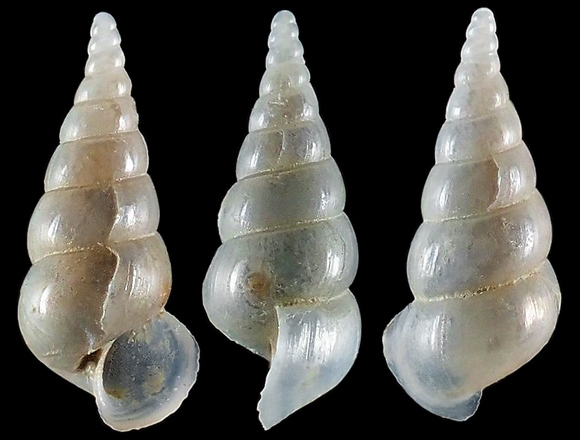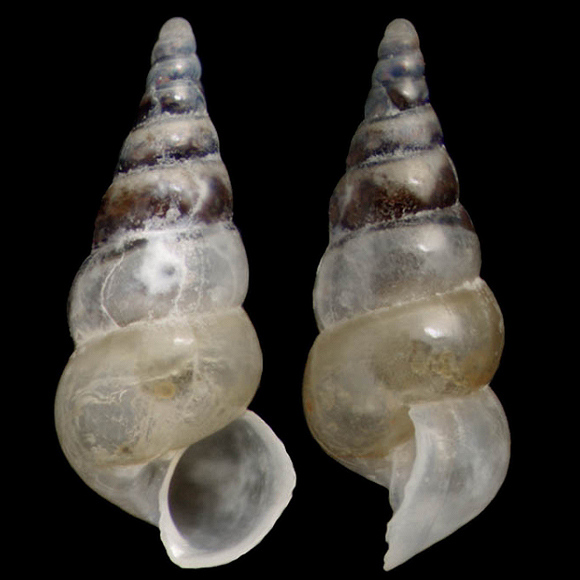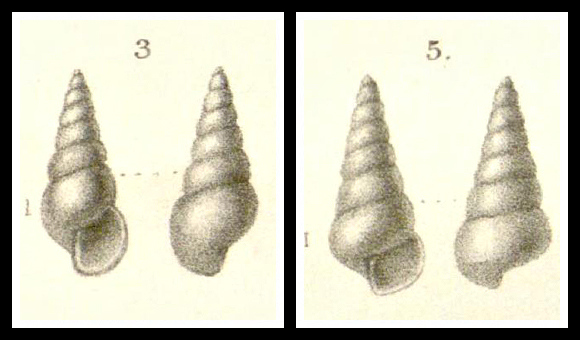
Synonym: acutalis Jeffreys, in the same publication.
« Shell forming an elongated cone, thin, semitransparent, and glossy. Sculpture, none. Colour clear white. Spire gradually tapering to a rather fine point. Whorls 6-7, convex; the last, with the mouth upwards, equals the rest of the shell; first whorl globular. Suture well defined but not deep, nearly straight. Mouth projecting, more round than oval and inclined to squarish, contracted above and effuse or spread out below; the base is entire and not sinuous or notched. Outer lip sharp-edged, expanding. Inner lip or pillar curved, somewhat reflected and thickened behind, where there is a slight chink but no perforation. » – J. G. Jeffreys: “Mediterranean Mollusca N°3 and other Invertebrata”, Annals and Magazine of Natural History ser.5 vol.11, London 1883, p.396.
200m deep, Dubrovnik, S. Croatia. 2,6mm. Original pictures provided by R. Stanić (HR) – (CC BY-NC-SA).

« Shell forming an elongated pyramid, thin, semitransparent, and very glossy. Sculpture, none on the surface; but the periphery is encircled by a distinct keel, which gives the base an angulated appearance. Colour clear white. Sspire long, straight, and sharp-pointed. Whorls 7, slightly convex or rounded, gradually enlarging to the last whorl, which bulges and takes up nearly half of the spire. Top whorl globular. Suture rather straight, well defined, but not deep. Mouth oval, acute-angled above and below; its length equals about one third of the spire. Outer lip sharp-edged. Inner lip inconspicuous. Pillar short and straight. Base somewhat flattened, imperforate. » – Op. cit. p.397.
Above, a specimen, without the basal keel, similar to that from Dubrovnik. Alborán Sea. Size: 2,8mm. Original pictures provided by S. Gofas for WoRMS – (CC BY-NC-SA).
